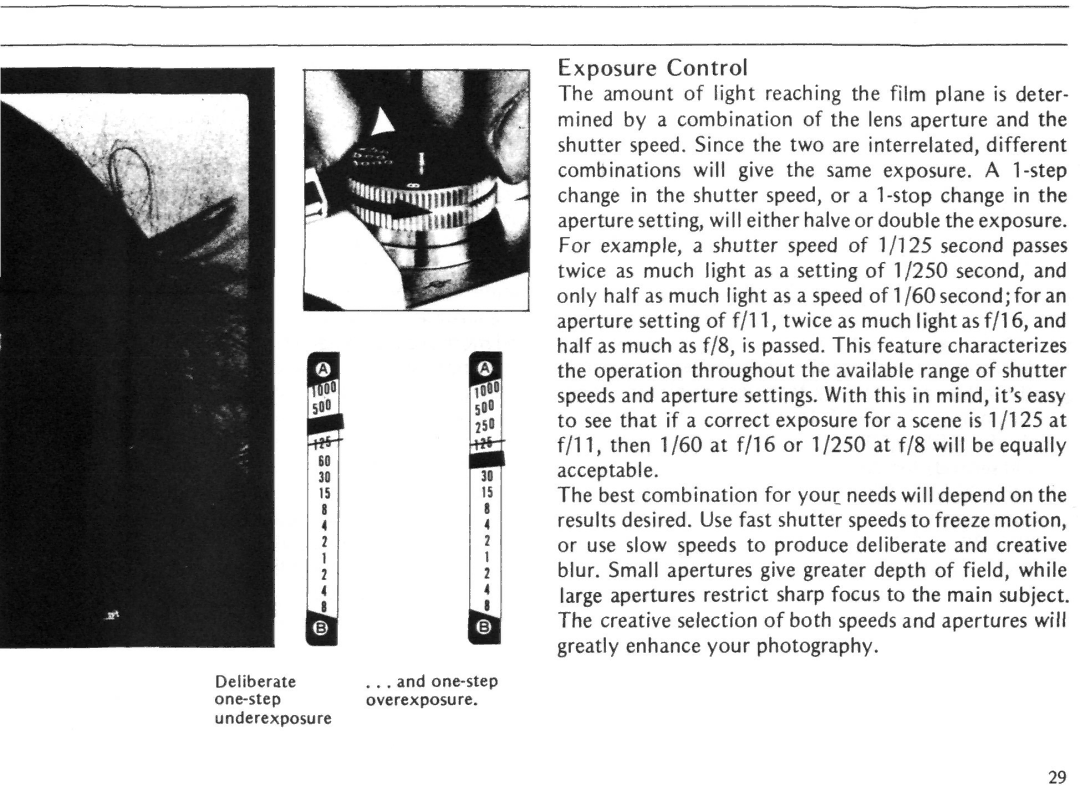
0
TIP500
60
D
Deliberate
| Exposure Control | |
| The amount of light reaching the film plane is deter- | |
| mined by a combination of the lens aperture and the | |
| shutter speed. Since the two are interrelated, different | |
| combinations will give the same exposure. A | |
| change in the shutter speed, or a | |
| aperture setting, will either halve or double the exposure. | |
| For example, a shutter speed of 1/125 second passes | |
| twice as much light as a setting of 1/250 second, and | |
| only half as much light as a speed of 1/60 second; for an | |
| aperture setting of f/11, twice as much light as f/16, and | |
c | half as much as f/8, is passed. This feature characterizes | |
the operation throughout the available range of shutter | ||
| ||
5D0iP | speeds and aperture settings. With this in mind, it's easy | |
to see that if a correct exposure for a scene is 1 /125 at | ||
250 | ||
f/11, then 1/60 at f/16 or 1/250 at f/8 will be equally | ||
| ||
30 | acceptable. | |
|
15The best combination for your needs will depend on the
I | results desired. Use fast shutter speeds to freeze motion, |
< |
2or use slow speeds to produce deliberate and creative
I
2 blur. Small apertures give greater depth of field, while
< large apertures restrict sharp focus to the main subject.
I
The creative selection of both speeds and apertures will greatly enhance your photography.
. . . and
29
